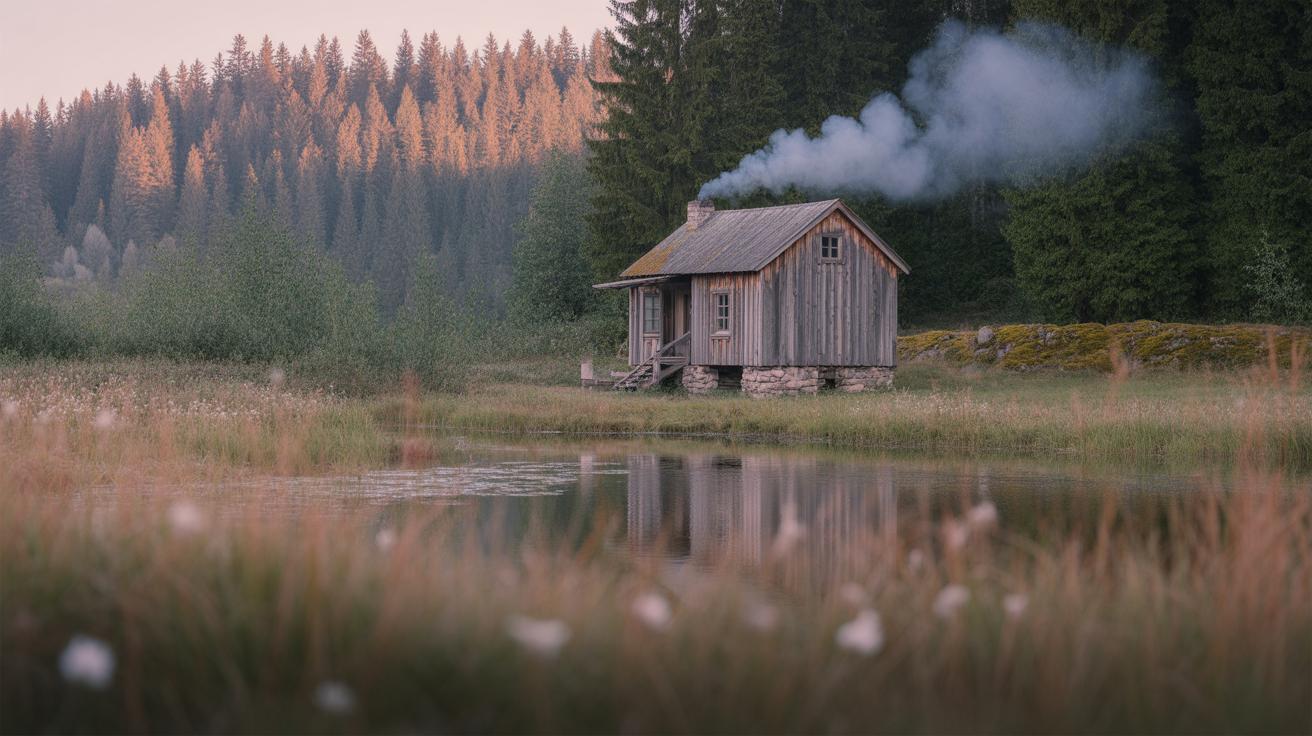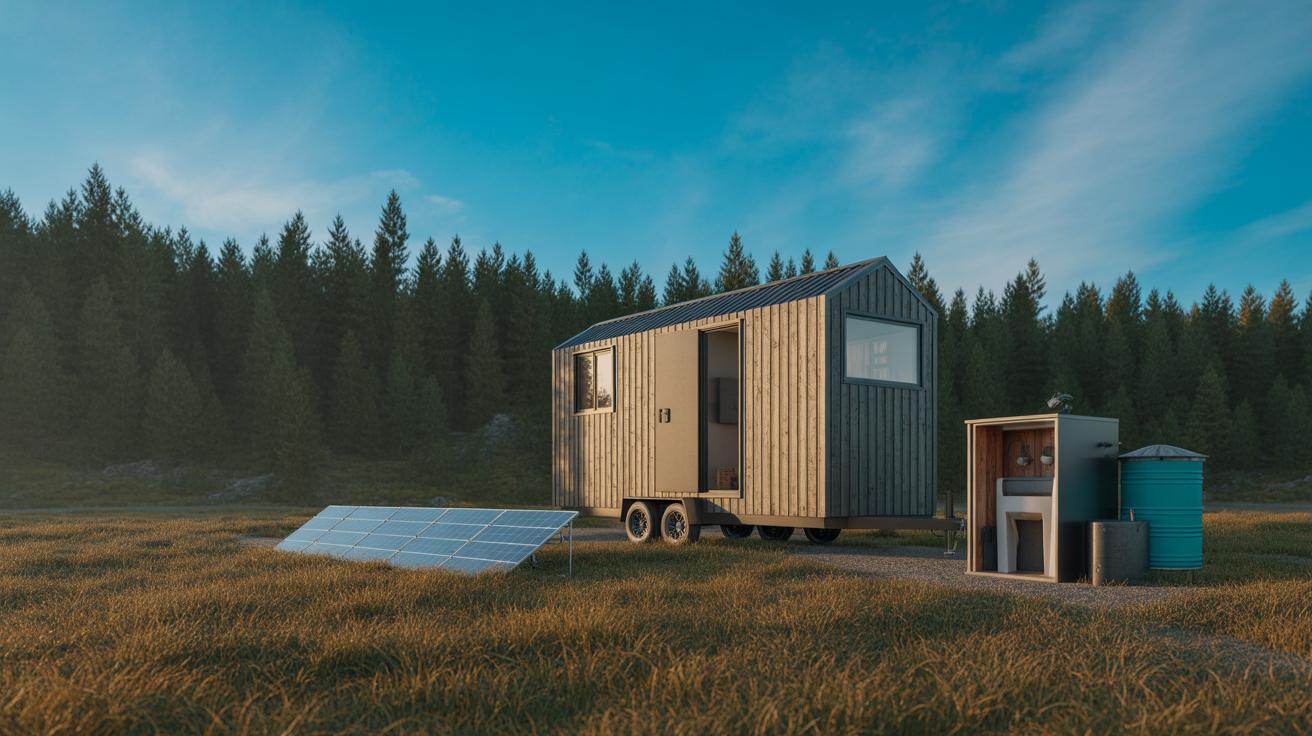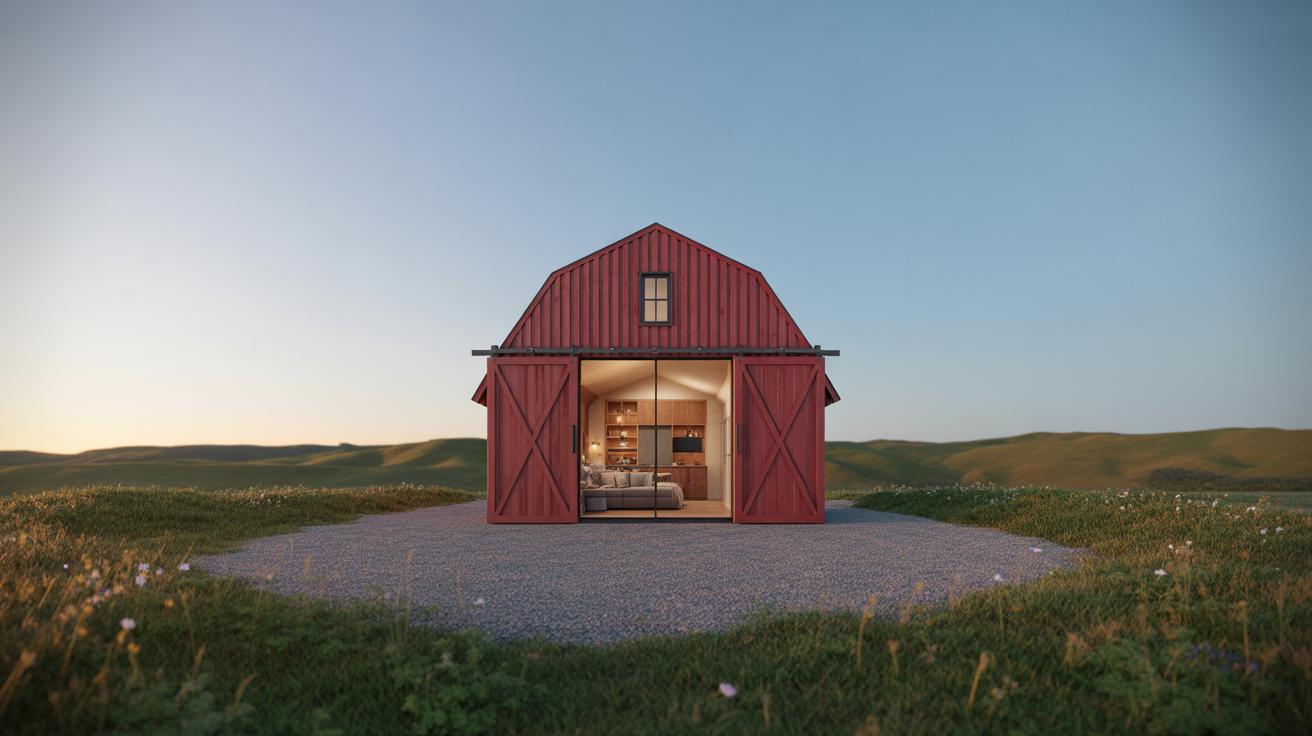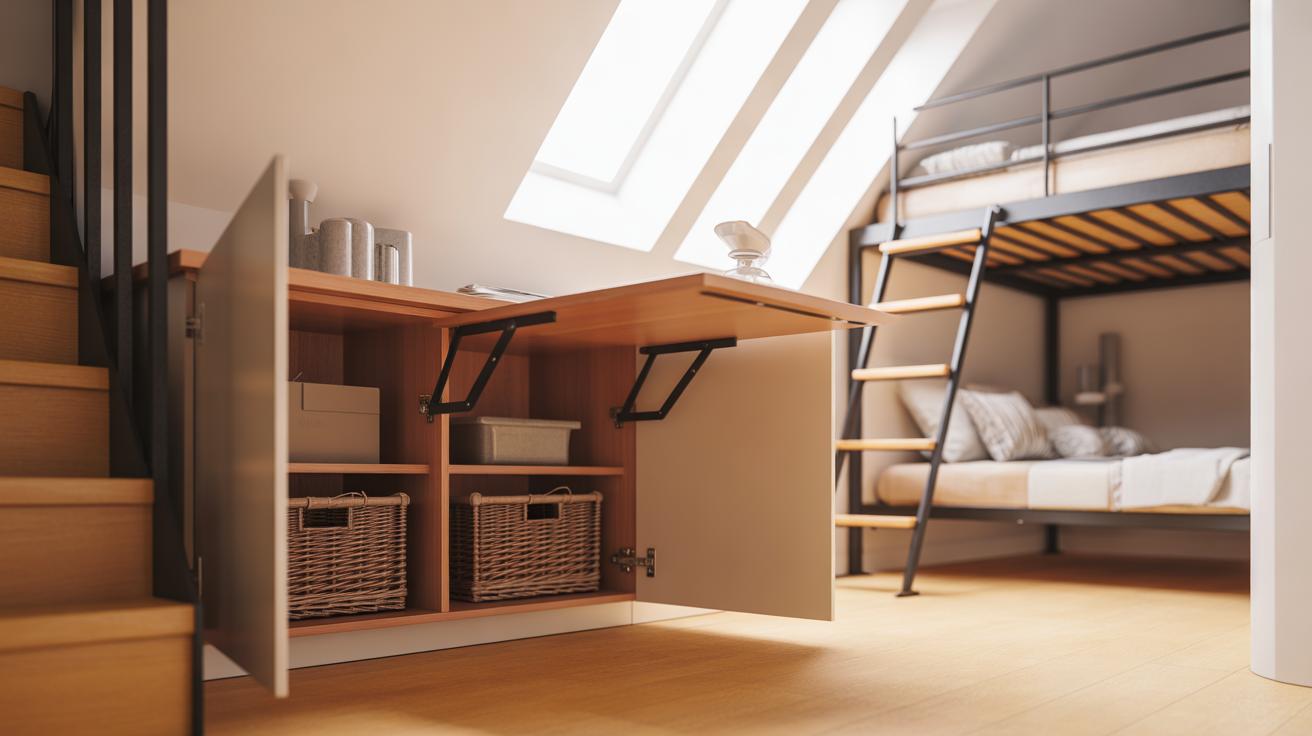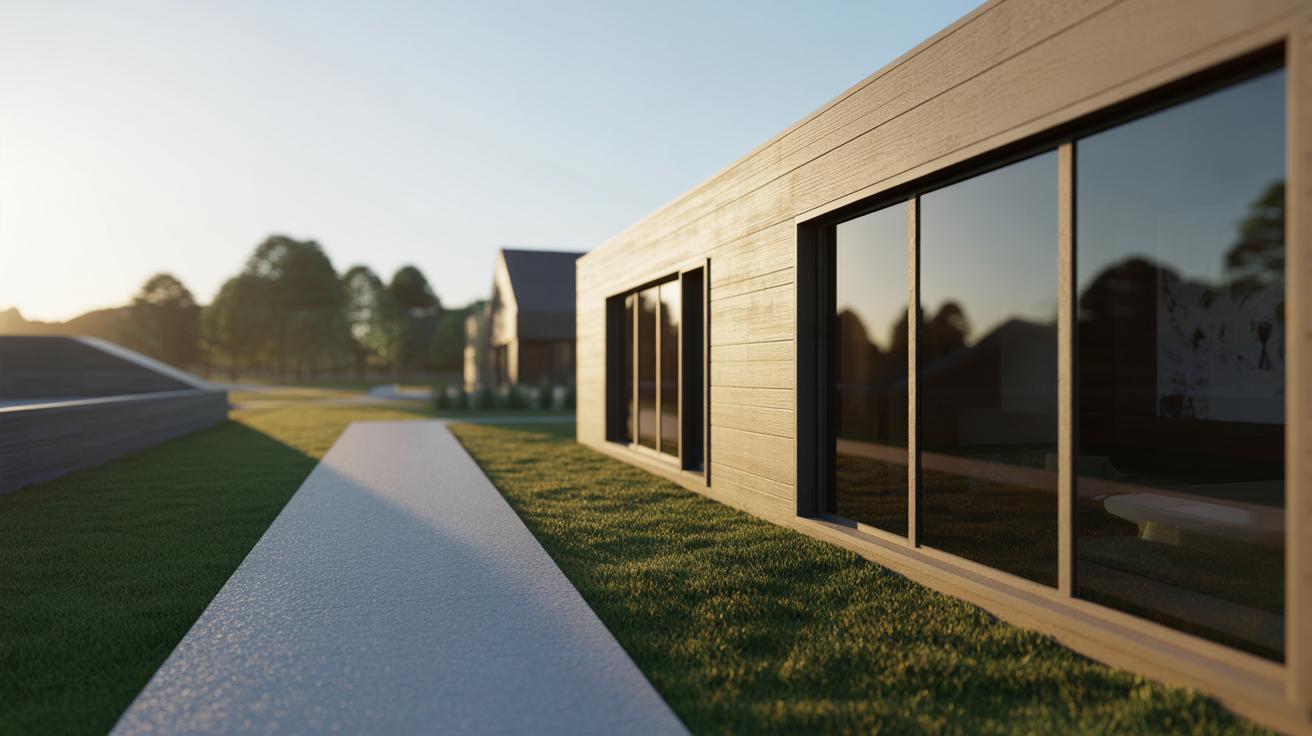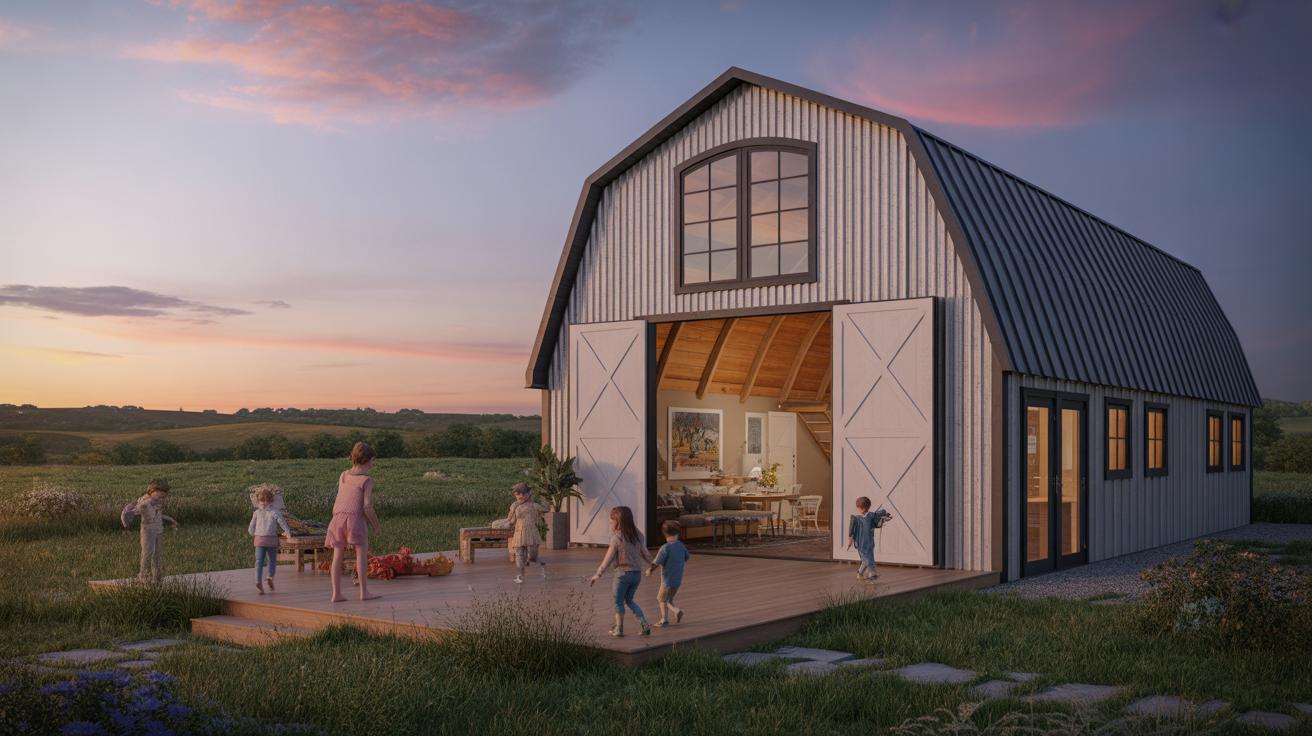Introduction
Many people seek a peaceful place to unwind after a busy week. A small cabin can offer that quiet retreat. It allows you to enjoy nature without giving up comfort. Rustic small cabins combine basic design with natural materials, fitting well into outdoor settings. These designs use wood and stone to create cozy and practical spaces. A cabin does not need to be large to feel welcoming. The right design helps you make the most of the space. It also connects you to the outdoors, making each weekend feel like a mini-vacation. You can find ideas for building or choosing a cabin that fits your needs and style.
Your weekend retreat should help you relax and recharge. Rustic small cabin designs achieve this by blending a natural look with modern comfort. They can be a simple shelter or a fully equipped home base. The key is to keep things easy to maintain and enjoy. This article covers various aspects of rustic cabins, from design choices to practical tips. You will learn how to plan, build, and enjoy your own cabin getaway. Consider what fits your lifestyle and how a cabin can enhance your free time.
Understanding Rustic Cabin Design

Rustic design focuses on simplicity, function, and natural beauty. Small cabins using this style often use materials like wood and stone to create a strong bond with their surroundings. These materials bring warmth and a rough, natural look that fits perfectly into forest or mountain settings.
Wood offers texture and character through visible knots and grain, while stone adds a solid, lasting touch. These elements help the cabin look like part of the landscape instead of standing out. This connection with nature is a key goal of rustic design.
Simplicity means keeping lines clean and the layout practical. It avoids unnecessary details that distract from the natural setting. This approach makes your cabin easy to live in and welcoming.
Rustic cabins invite you to relax and feel at home. The mix of natural materials and straightforward design creates a warm, comfortable space even when it is small. How might your own quiet escape reflect this balance?
Key Materials and Their Role
Wood like pine, cedar, and oak is common in rustic cabin building. Pine is affordable and easy to work with. Cedar resists moisture and insects better, making it a good choice for outdoors. Oak offers strength and a rich texture that ages beautifully.
Stone often comes from local sources, such as fieldstone or river rock. These give each cabin a unique look while standing up to weather for years. They often form foundations, fireplaces, or chimney accents.
Natural finishes keep the materials looking organic. They avoid high gloss or heavy stains. Clear oils or matte sealers protect the wood and stone without hiding their natural colors and patterns. This approach preserves the cabin’s authentic look.
Balancing Simplicity and Comfort
Rustic cabin design uses simple shapes like rectangles and squares for easy building and comfortable living. Open floor plans help the space feel larger and brighter. You won’t find complicated corners or extra rooms that go unused.
Comfort comes from soft, sturdy furnishings made from natural materials. Wool blankets, leather chairs, and handmade wooden furniture fit well. These choices add warmth without cluttering the space.
Finishes focus on texture over shine. Rough wool rugs, woven baskets, and iron light fixtures invite touch and create a relaxed mood. You can keep your retreat calm and functional while still feeling cozy.
Planning Your Weekend Retreat Cabin
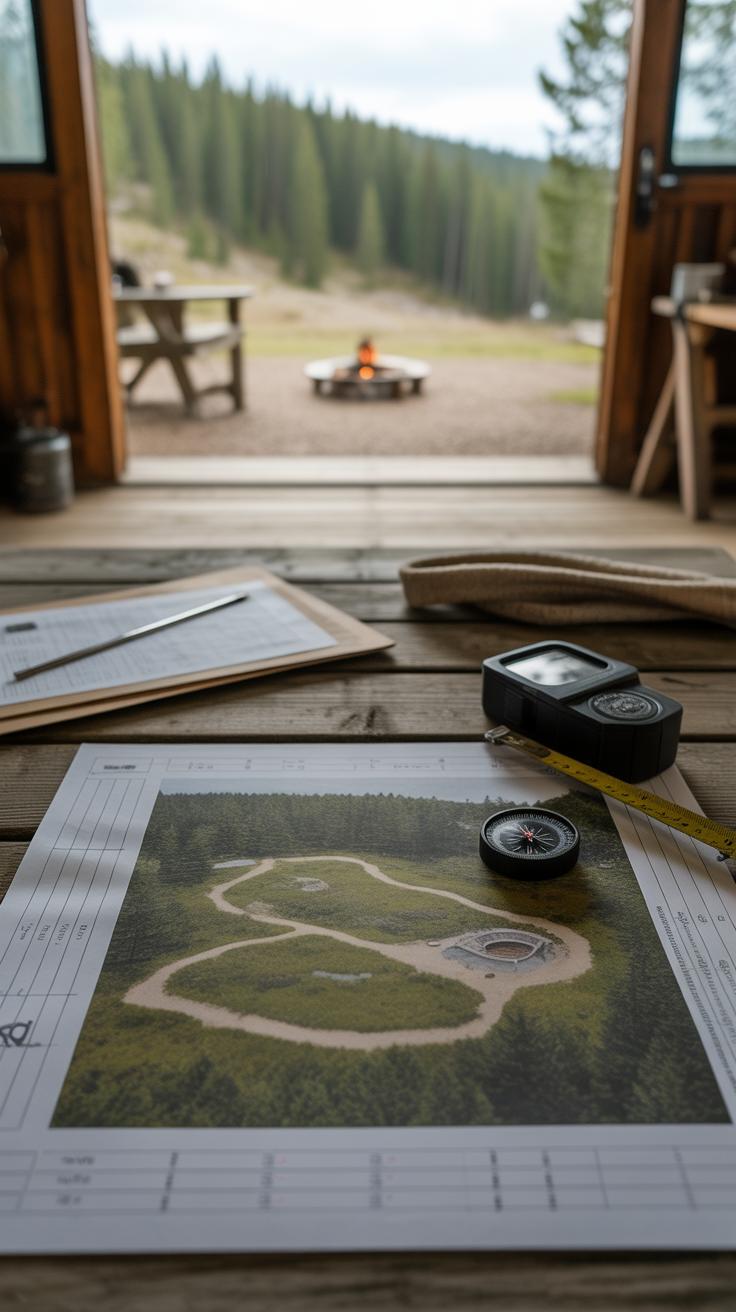
Choosing where to build or place your cabin will shape your whole retreat experience. Think about how much privacy you want. Do you prefer open views of mountains, forests, or lakes? Easy access matters too—you want to reach your cabin without trouble but still feel removed from daily noise.
The cabin’s size links closely to how you plan to use it. A tiny cabin might suit solo getaways or couples but may limit guests. A slightly larger space offers room for family or friends but requires more upkeep. Ask yourself: how many people will visit regularly? What activities will you do there?
Choosing Location and Size
Your retreat’s location affects peace and convenience. Look for spots free from heavy traffic but close enough to supplies and emergency services. Quiet neighborhoods, forest edges, and lakesides often make popular sites.
Cabin size impacts maintenance and comfort. Smaller cabins save money and time but may feel cramped for longer stays. Larger cabins allow more storage and social space but increase cleaning and heating costs. Consider your typical visit length and expected guests before deciding.
Budget and Regulations
Set a clear budget early. Include land costs, construction, utilities, and furnishings. Don’t forget ongoing expenses like property taxes and upkeep. Overestimating costs by 10 to 20 percent helps avoid surprises.
Check local building codes and zoning laws before final plans. These rules control cabin size, placement, and materials. Some areas require permits or may restrict septic systems or off-grid solutions. Contact your local building department to find specific rules that apply.
What will you need to feel comfortable and rested at your retreat? Planning carefully ensures your cabin fits your lifestyle and legal requirements from the start.
Designing the Cabin Layout
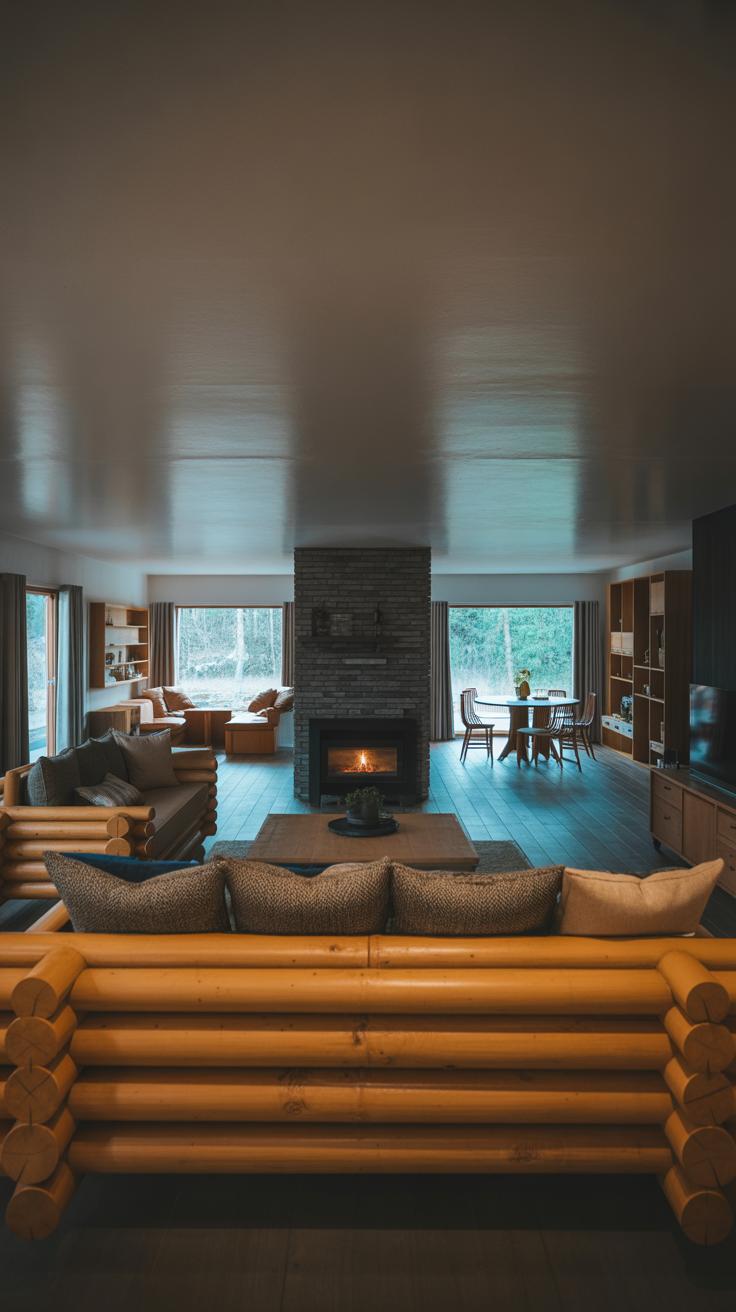
Creating a functional layout in a small cabin means thinking about how you will use every inch of space.
Focus on multi-purpose rooms that serve more than one function, such as a living area that doubles as a guest sleeping space with a fold-out couch.
Consider space-saving solutions like wall-mounted shelves, under-bed storage, and compact kitchen units to free up floor space.
Open floor plans often make cabins feel larger by combining living, dining, and kitchen areas into one space without walls blocking views or light.
Separated rooms offer more privacy if you plan to share your retreat with family or friends but can make the cabin feel smaller if not designed carefully.
Use light colors on walls and furniture and add plenty of windows to bring in natural light, which helps rooms appear bigger and more inviting.
Maximizing Small Spaces
Built-in furniture can save space and reduce clutter. For example, benches with hidden storage or fold-down tables can free up room when they aren’t in use.
Convertible areas like a dining table that becomes a workspace add flexibility without crowding the cabin.
Keeping clutter down is crucial. Use baskets, hooks, and storage boxes to organize items and maintain a clean, open feel.
Ask yourself how often you’ll use each item to avoid keeping things you don’t need in your weekend retreat.
Open Plan Versus Separate Rooms
An open plan allows air and light to flow freely, creating a sense of spaciousness even in a small cabin.
This layout works best if you enjoy socializing or want to keep an eye on cooking while relaxing.
Separate rooms offer quiet and privacy when you share the cabin with others or want distinct areas for sleeping and working.
Think about how you intend to use your cabin. Would you prefer a single, flexible space or multiple defined areas?
Choosing wisely will affect how comfortable and practical your retreat feels for your weekend getaways.
Material Choices for Durability and Style
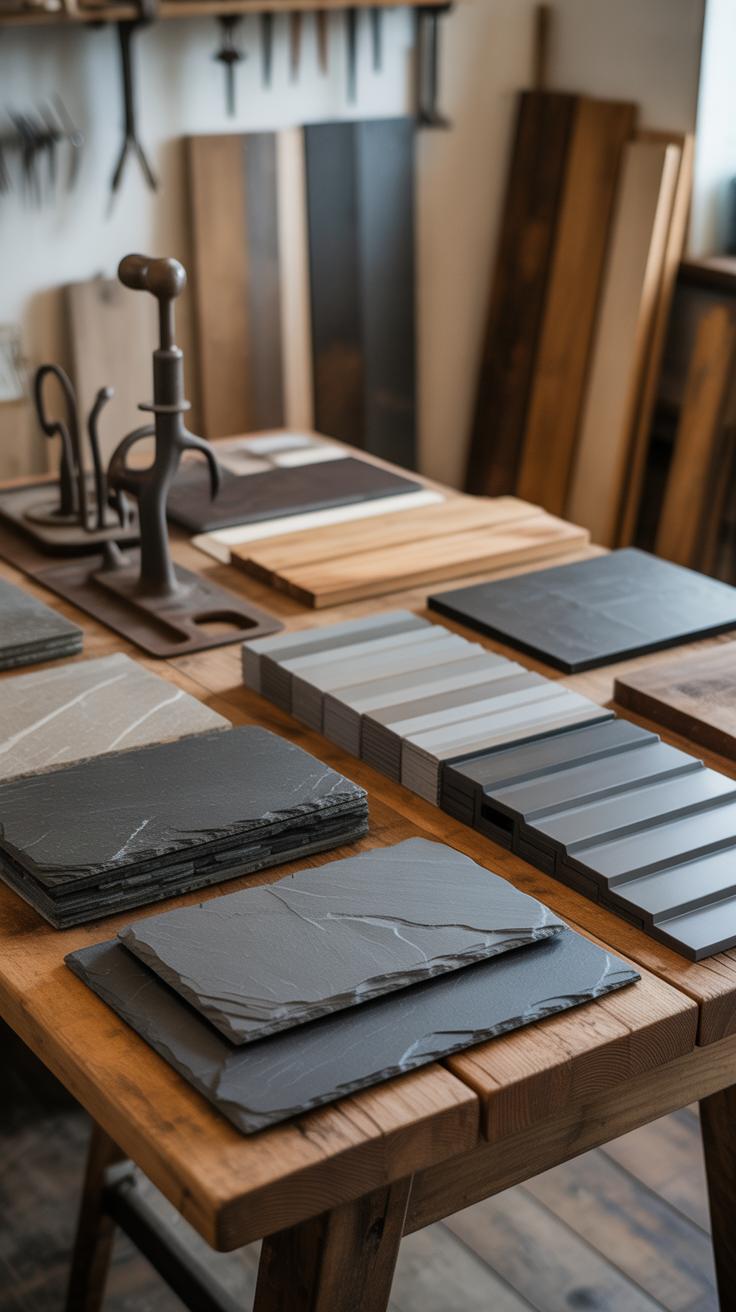
Choosing the right materials shapes both the look and lifespan of your rustic cabin. Wood holds a natural charm and warmth that fits well with small cabins built for weekend retreats. It blends smoothly with outdoor surroundings and ages gracefully when cared for.
Stone and metal add strength and contrast, giving a cabin a rugged feel without losing style. Stone foundations and accents resist weather and reduce maintenance needs. Metal roofing performs well over time and keeps the cabin dry, while offering a simple, rustic appearance.
Windows and doors play a big role in your cabin’s character. Opt for wood-framed windows with divided panes or simple shutters to keep that handcrafted vibe. Solid wood doors with wrought-iron hardware reinforce the rustic style and provide security.
How do you balance durability with style in your material choices? Think about how much upkeep you’re ready to commit to. Choosing materials that fit your lifestyle keeps your weekend getaway low stress and welcoming.
Selecting Wood Types
Different woods serve different purposes in cabin construction. Cedar resists insects and decay, making it ideal for exterior siding. Pine offers a lighter color and works well inside for walls and ceilings. Oak adds strength but needs sealing to prevent moisture damage.
Maintain wooden surfaces by applying sealants every few years, especially on exposed areas. Keep gutters clear to avoid water damage to trim and siding. Inside, regular dusting and occasional polishing preserve wood’s natural glow.
Think about the climate of your retreat. Do you need wood that handles moisture well? Will you stain or paint the wood to protect and customize its look? Choosing the right wood supports the cabin’s durability and rustic charm.
Roofing and Windows
Roofing materials shape how your cabin weathers storms and fits the rustic theme. Metal roofs stand up to wind and snow and age with minimal fuss. Wood shingles provide authenticity but require more maintenance and careful installation.
Windows influence both light and airflow inside the cabin. Double-hung or casement windows with wooden frames blend well with rustic designs and help regulate temperature. Adding wide trim around windows enhances their visual weight.
Consider how many windows you want to balance views, privacy, and insulation. Would simple glass panes or divided lights better suit your style? The right roofing and windows protect your cabin while inviting nature’s presence inside.
Creating Cozy Interior Spaces
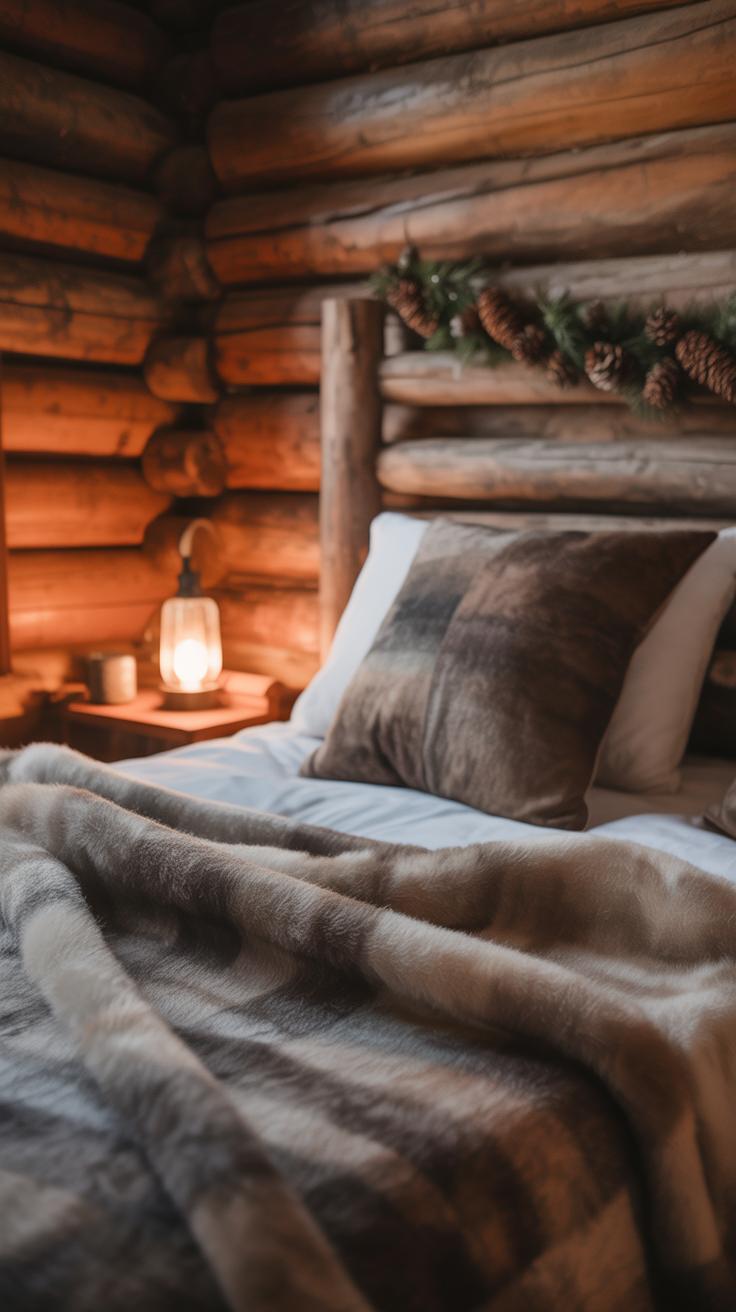
Your small cabin should feel warm and inviting the moment you step inside. Start by thinking about how to balance open space with just enough furnishings to keep the room comfortable, not crowded. Choose pieces that serve more than one purpose, such as a bench with built-in storage or a fold-out table. This allows you to keep essential items close without clutter.
Soft textiles like wool throws, linen curtains, and woven rugs add texture and warmth without overwhelming your space. Rustic charm often comes from natural materials and simple patterns, so select decorations that highlight wood grains, stone, or leather. You might place a few handmade pottery pieces or iron candle holders on shelves for authentic accents.
Look closely at how you arrange your furniture. Can you create a cozy nook near a window for reading or relaxing? How can you keep walkways clear while making the cabin feel lived in? Thoughtful placement ensures your cabin feels inviting and peaceful, perfect for a weekend retreat.
Lighting Choices and Effects
Light changes the atmosphere in your cabin. Maximize natural light by choosing window treatments that let sunlight filter through, like light linen curtains. During the day, this brings out the warm tones of wood and stone. At night, the right lighting can keep your retreat cozy.
Use energy-efficient bulbs with warm color temperatures—they mimic firelight and complement rustic interiors. Consider vintage-style LED bulbs or lamps with dimmer switches for flexibility. Small battery-operated lanterns or string lights can add charm without wiring hassle.
Have you thought about positioning lights to highlight features, like a wood beam or stone wall? Layer your lighting using overhead, task, and ambient options. This approach creates a balanced glow that feels welcoming and comfortable.
Furniture and Decoration
When selecting furniture for a small cabin, opt for simple designs that fit the rustic style without overwhelming the limited space. Pieces made of reclaimed wood with clean lines can work well. Tables and chairs that fold or nest offer flexibility for gatherings or quiet moments.
Choose cushions and throws in natural fabrics like cotton, wool, or burlap to create comfort and a tactile feel. Adding a plaid or striped pattern can give your space a classic, rustic touch. Small shelves or hooks made from raw wood or metal keep personal items accessible and organized.
Do you have favorite objects you want to display? A few well-chosen rustic accessories, such as a cast-iron kettle or woven baskets, make your cabin feel like your own retreat without creating clutter. Keep decoration simple and functional to maintain a calm, restful environment.
Incorporating Outdoor Living Areas
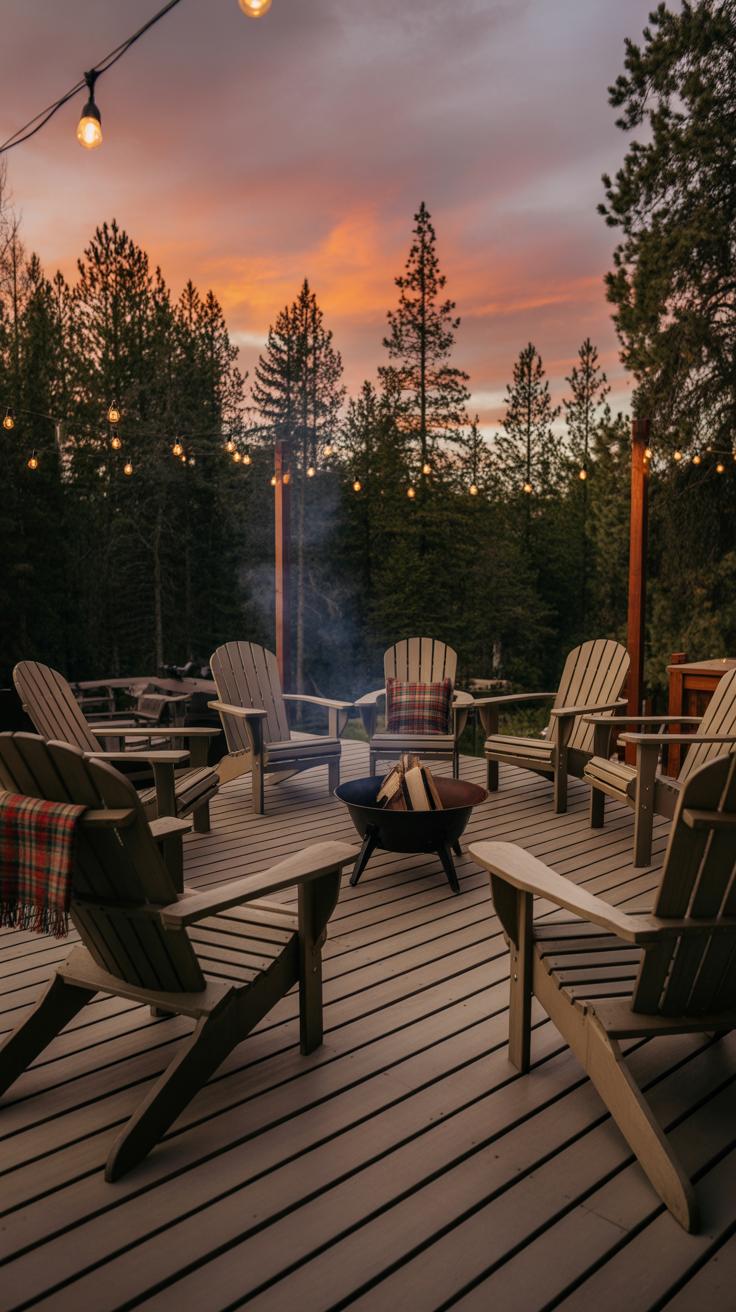
Your cabin should feel bigger than its walls. Outdoor living areas extend your space while keeping the rustic style alive. Building a porch, deck, or patio that matches your cabin materials and colors ties everything together visually and functionally. For example, using the same wood type for the deck that you used inside the cabin creates a smooth transition.
Including a covered porch can give you shelter from rain or sun, making it easier to enjoy your retreat any time. You might build a wide deck for sunbathing, dining, or gathering with friends. Each outdoor area offers a way to relax or socialize without leaving your peaceful site.
How do you want to use your outdoor spaces? Think about seating areas, cooking spots, or quiet nooks for reading. When designed as a natural part of your cabin, outdoor living spaces become a key part of your weekend escape experience.
Designing Functional Outdoor Spaces
You want porches and decks built for comfort and practicality. Start by measuring the space you have and prioritize activities like eating, relaxing, or entertaining. Arrange furniture to allow easy movement and good views of the surroundings. A simple layout with a table and chairs can create a dining area right outside your cabin door.
Choose materials that stand up to weather and use. Teak, cedar, or treated pine work well for furniture because they resist moisture and insects. For decking, consider composite lumber if you want low maintenance without losing the wood look.
Quality cushions made with outdoor fabrics add comfort and resist fading or mildew. Think about placing a fire pit or a few chairs around a small outdoor heater to extend your time outside during cooler evenings.
Integrating Nature and the Cabin
Planning outdoor areas to connect with nature makes your retreat feel more peaceful. Arrange seating or dining spaces to face your best views—maybe a forest clearing or a nearby stream. Position your porch to catch a cool breeze or morning sunlight.
Adding native plants or wildflowers around your deck helps your cabin blend with the landscape. Small shrubs or grasses soften hard edges while staying low maintenance. Avoid overly formal gardens; stick to natural shapes to keep your rustic theme strong.
Trees near the cabin can provide shade and offer a sense of shelter. Consider a simple walkway made from stone or wood chips that leads from your cabin to the deck, inviting you to step outside and enjoy the fresh air.
Sustainable Practices for Your Cabin
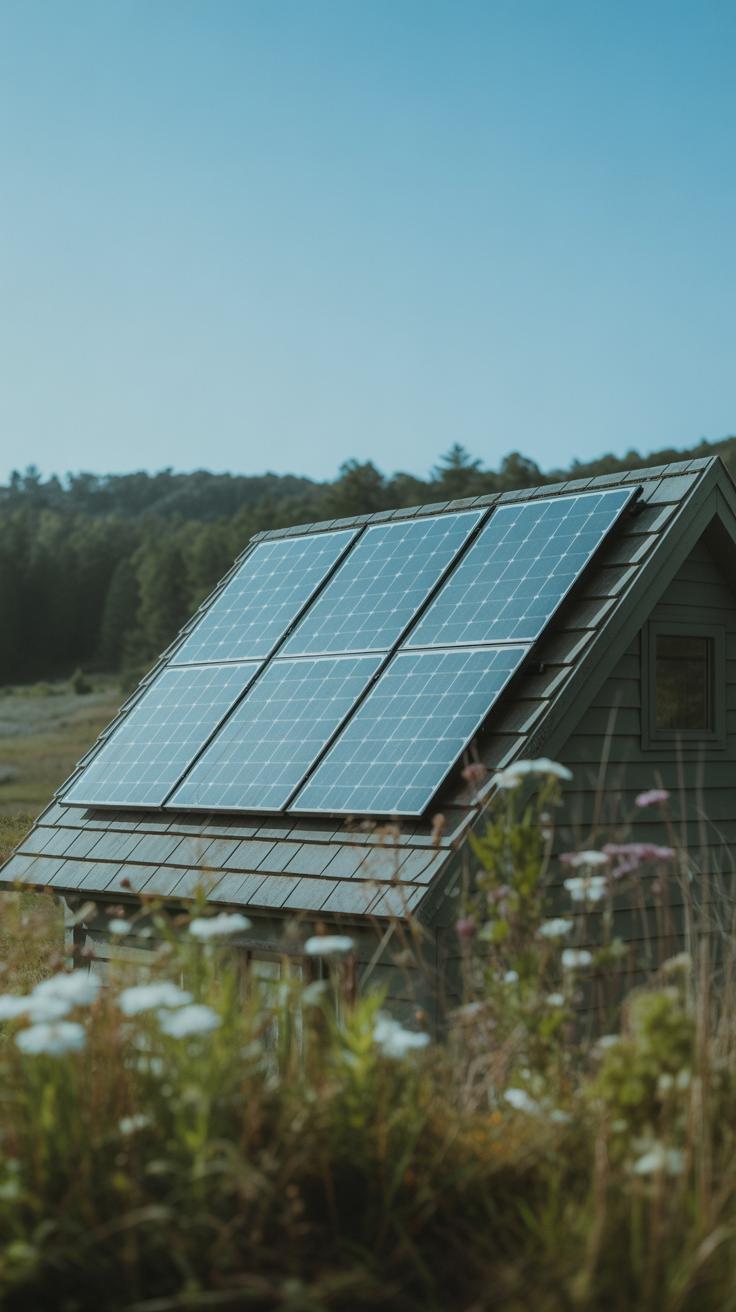
Building and living in a rustic small cabin can be closely tied to sustainable choices that respect the environment. Using local materials cuts down on transportation impacts and supports nearby workers. For example, sourcing timber from nearby forests or reclaimed wood from old barns fits well with rustic styles while reducing waste. Energy-efficient designs such as proper insulation, natural ventilation, and strategic window placement keep your cabin comfortable without high power needs.
Water conservation also plays a key role. Collecting rainwater or installing low-flow fixtures reduces water use. These steps align with the simple, connected lifestyle many seek in a cabin retreat. How might you blend sustainability with your cabin’s rustic charm while making your stay economical and eco-friendly?
Energy and Water Efficiency
You can lower energy use by choosing solar panels or small wind turbines. Solar kits designed for cabins come ready to install and work well in remote areas without electric access. Proper insulation keeps your cabin warm in winter and cool in summer, reducing heater or fan use.
Rainwater harvesting collects water from your roof into barrels or tanks. This water is perfect for gardening or cleaning. Installing LED bulbs inside your cabin uses less electricity than traditional lights. Are there ways to design your cabin so it captures natural light for most of the day?
Material Sourcing and Waste Reduction
Using materials sourced from your area means less environmental damage during transport. Local stone, wood, and even handmade bricks can give your cabin a unique look. Salvaging wood or fixtures from old buildings prevents waste and adds character. Planning your build to minimize cuts and scraps lowers leftover waste needing disposal.
Techniques like timber framing or using earth-based materials reduce reliance on concrete and steel. These methods fit rustic aesthetics and cause less harm to the land. Could you reuse leftover materials when finishing your outdoor spaces or making simple furnishings? Thinking this way can stretch your budget and lower your cabin’s footprint.
Maintaining Your Rustic Small Cabin
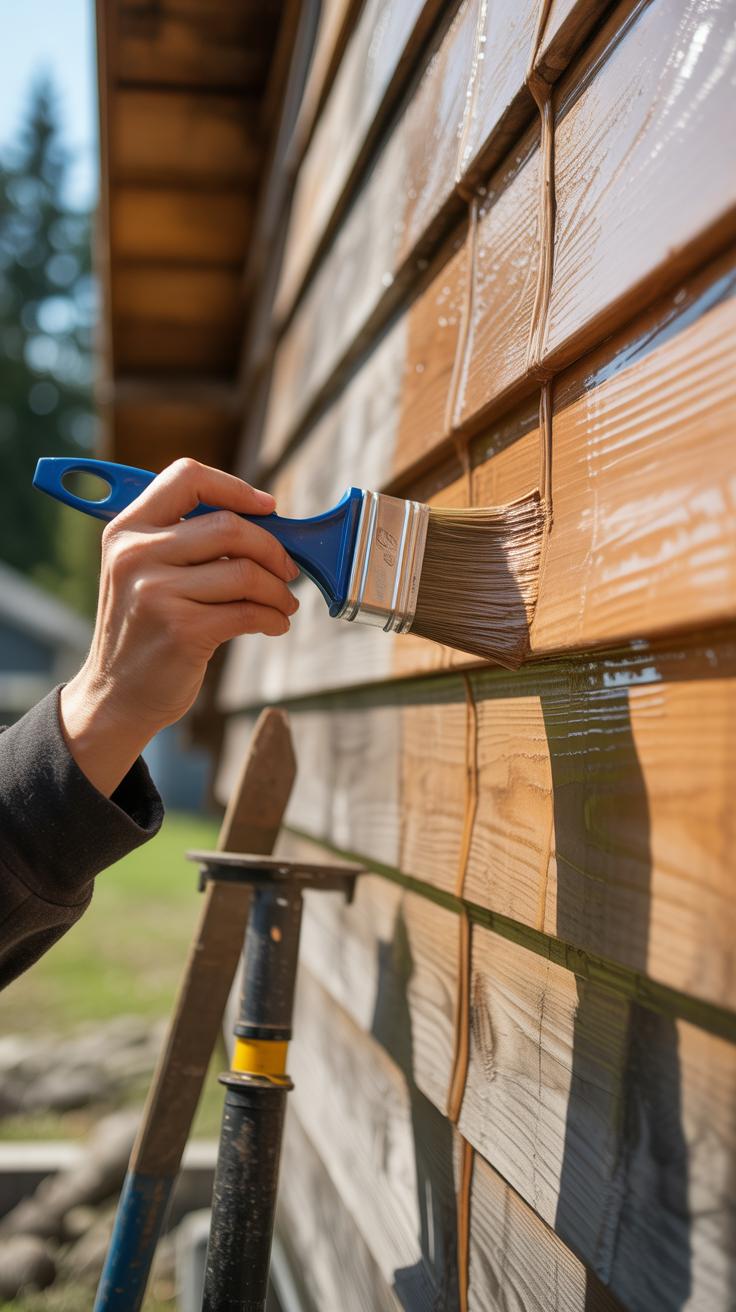
Your rustic small cabin needs regular care to stay comfortable and strong over time. Focus on checking key areas to catch problems early before they get worse. Pay attention to the wood, roof, and windows. These parts face the most wear from weather and daily use.
Seasonal upkeep helps protect the cabin against harsh conditions. For example, clean and seal wooden surfaces in spring to stop moisture damage. Inspect the roof after winter to find missing shingles or leaks. Clear gutters in fall to avoid water build-up.
Small repairs done early cost less than big fixes later. Fix loose boards or cracks immediately to keep your cabin sealed and safe. When upgrading, choose materials and styles that fit your cabin’s rustic charm. You might add weather-resistant trim or energy-efficient windows that still look natural.
How do you balance comfort with simple, rustic design in your weekend retreat? Maintaining your cabin regularly helps you enjoy it longer without losing its quiet appeal.
Routine Maintenance Tasks
Start with cleaning. Remove dirt and debris from floors, walls, and outdoor surfaces every few months. Dirt traps moisture and can speed up wood decay. Clean gutters twice a year, after fall and spring, to keep water flowing away from your cabin.
Sealing wood needs your attention yearly. Apply a wood sealer or stain each spring after cleaning. This step prevents water damage and preserves the wood’s look. Inspect your roof each season. Look for broken shingles, loose nails, or signs of leaks. Check inside for water stains or mold on ceilings and walls.
Check your windows and doors for drafts every autumn before colder weather arrives. Weatherstripping keeps the heat inside and the cold outside. These simple steps save money and effort while protecting your cabin all year round.
Making Repairs and Upgrades
Wood damage shows as cracks, splinters, or softness when pressed. Repair small spots by sanding and applying wood filler, then sealing. Replace badly damaged boards to avoid bigger problems. Use wood that matches your cabin’s rustic style for consistent charm.
Upgrade your cabin’s function without losing style. Swap old lighting for LED bulbs with warm tones. Maintain rustic fixtures or buy vintage-style lamps. Add insulation behind walls or under floors to keep rooms warmer. Look for natural materials like wool or cotton.
Consider adding storm shutters or protective roof coatings to extend your cabin’s life. These upgrades reduce maintenance over time. What repairs or improvements make your cabin easier to use while still feeling like a quiet escape?
Conclusions
Rustic small cabin designs offer a solid way to create a peaceful weekend retreat. By focusing on simplicity and natural materials, these cabins serve their purpose well. They provide a break from daily routines and a chance to connect with nature. To build or choose the right cabin, consider your needs, the environment, and your budget. Planning carefully will help you get the most out of your retreat space. Remember, the goal is comfort and calm in a small, efficient home.
Creating your cabin space also means thinking about future use and upkeep. With practical design and clear priorities, you can enjoy your retreat for many years. Using local materials and simple plans often keeps costs down and supports sustainability. A rustic small cabin can become a place of relaxation, creativity, and family time. Reflect on how you want your retreat to work for you. Then take steps to make your cabin a welcoming spot to return to every weekend.


